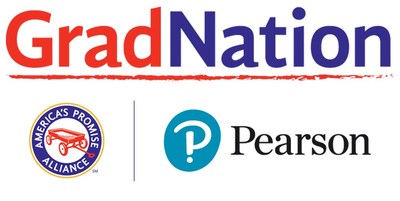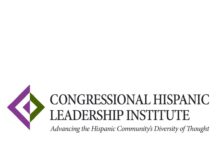BOSTON, May 11, 2017 /PRNewswire-HISPANIC PR WIRE/ — Youth whose First Language is Not English (FLNE) represent the fastest growing segment of the United States public school population. Despite evidence that FLNE students display high levels of optimism and motivation for academic advancement, they continue to graduate at lower rates than the national average. Many states are looking for new ways to support this student population. As the Center for Promise, the Boston-based research institute of America’s Promise Alliance, finds in its new report, I Came Here to Learn: The Achievements and Experiences of Massachusetts Students Whose First Language Is Not English, youth stories and insights can offer a new perspective on their lives.
In recent years, Massachusetts has increased its high school graduation rate from just below 80 percent to 86 percent – one of the highest in the nation. However, 20 percent (one in five students) in Massachusetts are identified as FLNE, and the high school graduation rate for this growing subgroup is just above 70 percent.
I Came Here to Learn examines student-level data from the Massachusetts Department of Elementary and Secondary Education (ESE) and draws on interviews of Massachusetts FLNE students to uncover stories of resilience, motivation, and persistence as those students pursue their American dream.
The research is a component of the GradNation State Activation Initiative, a three-year partnership between America’s Promise and Pearson to increase high school graduation rates by encouraging statewide innovation and collaboration and sharing successful models. ESE, one of three State Activation grantees across the nation, chose to focus its effort on supporting a coalition of 10 Massachusetts urban school districts to improve graduation rates for FLNE students.
“As the number of FLNE students in public schools increases, I Came Here to Learn tells us that FLNE youth, like all youth, will succeed in school and life when they have access to trusting relationships with peers and adults and the right support they need in school, in their homes, and throughout their communities,” said Dr. Jonathan Zaff, executive director, Center for Promise. “But what we also see are indications that we, as a society, are not holding up our end of the bargain. Too many FLNE youth continue to struggle, even after becoming English proficient.”
“When we ask young people what it is they need to succeed, they’ve consistently shown a heightened awareness of the opportunities and barriers before them,” added Dr. Shannon Varga, postdoctoral research fellow at the Center for Promise, and co-author of the report. “I Came Here to Learn examines the complex personal, social, and structural barriers to learning English that FLNE students report having to navigate daily and highlights which supports help them persist.”
There are 123 native languages other than English spoken in school districts across Massachusetts. While Massachusetts has engaged in considerable work to improve educational outcomes for FLNE students, the challenges these young people and their families face go beyond academic English acquisition. Sustainable, long-term solutions will require a more comprehensive approach – one involving ESE, families, students, communities and other key stakeholders.
“FLNE students bring to the classroom a unique identity and drive to succeed,” said Shilpi Niyogi, Pearson’s Senior Vice President for North America Corporate Affairs and Global Media. “This fresh research adds to the evidence that with the right supports and a positive school climate, FLNE students can achieve their dreams and ambitions in school, work and life.”
Key Findings. Through statistical analysis of statewide student-level data, provided by the Massachusetts Department of Elementary and Secondary Education, for more than 13,000 FLNE students, as well as group interviews with Latinx youth in five cities throughout Massachusetts—Brockton, Chelsea, Revere, Somerville, and Worcester—several findings emerged. Some are highlighted below.
- FLNE does not equal low performing. There are FLNE students who are not currently English Learners (ELs) who have higher graduation rates than native English speaking students across MA (92 percent vs 88 percent). There are also high performing ELs who have grad rates higher than the statewide average for ELs (70 percent vs 63.9).
- FLNE students new to Massachusetts and those qualifying for free and reduced price lunch need more support. Research shows FLNE students who qualify for free and reduced lunch have the lowest four-year graduation rates. Conversely, these students also have the largest increases in graduation rates when given more time to graduate.
- Competing priorities with school (including work or caring for family) are specific hardships that many FLNE students face while balancing multiple language and cultural expectations.
- Family separation through immigration impacts many FLNE students emotionally, academically, and economically.
- A school’s climate directly impacts students’ will to graduate. However, supportive relationships with caring adults and peers often encourage youth to persist.
Implications. The Center for Promise research team went straight to the source and asked FLNE young people what improvements they would make to programs, policies, and practices to help other students learn English and persist in school through graduation. Presented here are some of those recommendations, based on their responses and experiences: 1) Create additional opportunities for connection with peers and adults for increased school engagement and performance; 2) Engage young people in the design of educational programs that serve FLNE students; 3) Support the student by supporting the family with greater efforts to foster family engagement; and 4) Provide more flexible programs for older youth to enable students to also earn money to contribute to the household.
The Road to 90. America’s Promise Alliance is a leader of the GradNation campaign to raise high school graduation rates to 90 percent by the Class of 2020. According to the latest Building a Grad Nation report, released last week, in 33 states English Learners graduated at rates less than 70 percent, and in six of those states – Arizona, Nevada, New York, Maryland, Virginia and Hawaii – less than 50 percent of ELs graduated on time.
“Equity gaps remain a clear challenge for raising high school graduation rates among English Learners in Massachusetts and several other states,” said John Gomperts, president & CEO, America’s Promise Alliance. “The country must intensify its efforts with this key subgroup if we are to reach the goal of 90 percent on-time graduation. Now, more than ever, engaging in more state specific partnerships – like our work with Pearson and the GradNation State Activation initiative – is one way to focus our efforts to get more young people across the graduation stage.”
Authors & Sponsor. I Came Here to Learn was co-authored by Shannon Varga, Max Margolius, Catalina Tang Yan, Marissa Cole and Jonathan Zaff with the Center for Promise. As part of the three-year collaboration with America’s Promise Alliance through the GradNation State Activation initiative, Pearson is the sole sponsor for this study and its dissemination. The initiative invests in three key strategies: encouraging statewide innovation and collaboration, sharing knowledge and replicating what works, and developing successful models all states can replicate. The Massachusetts Department of Elementary and Secondary Education is one of three State Activation grantees across the nation.
Full Report, Videos & Other Resources. To read the full report, executive summary, access youth videos and other resources, visit: http://gradnation.org/i-came-here-to-learn.
**FLNE is an umbrella term that includes English Learners, youth who have reached English proficiency, and other non-native English speakers who have never been enrolled in a formal EL program.
About the Center for Promise
The Center for Promise is the applied research institute for America’s Promise Alliance, housed at the Boston University School of Education and dedicated to understanding what young people need to thrive and how to create the conditions of success for all young people. www.AmericasPromise.org/program/center-promise.
About America’s Promise Alliance
America’s Promise Alliance leads the nation’s largest network dedicated to improving the lives of children and youth. As its signature effort, the GradNation campaign mobilizes Americans to increase the on-time high school graduation rate to 90 percent by the Class of 2020 and prepare young people for postsecondary enrollment and the 21st century workforce. www.AmericasPromise.org
Available Topic Expert(s): For information on the listed expert(s), click appropriate link.
John Gomperts
http://www.profnetconnect.com/johng
Jonathan Zaff
http://www.profnetconnect.com/jonz
Contact: Daria Hall, 1-202-6570621

Video – http://www.youtube.com/watch?v=x6QTqdaybu4&t=82s
Logo – http://mma.prnewswire.com/media/508826/GN_APAandPearsonNoSAlabelUpdated.jpg





